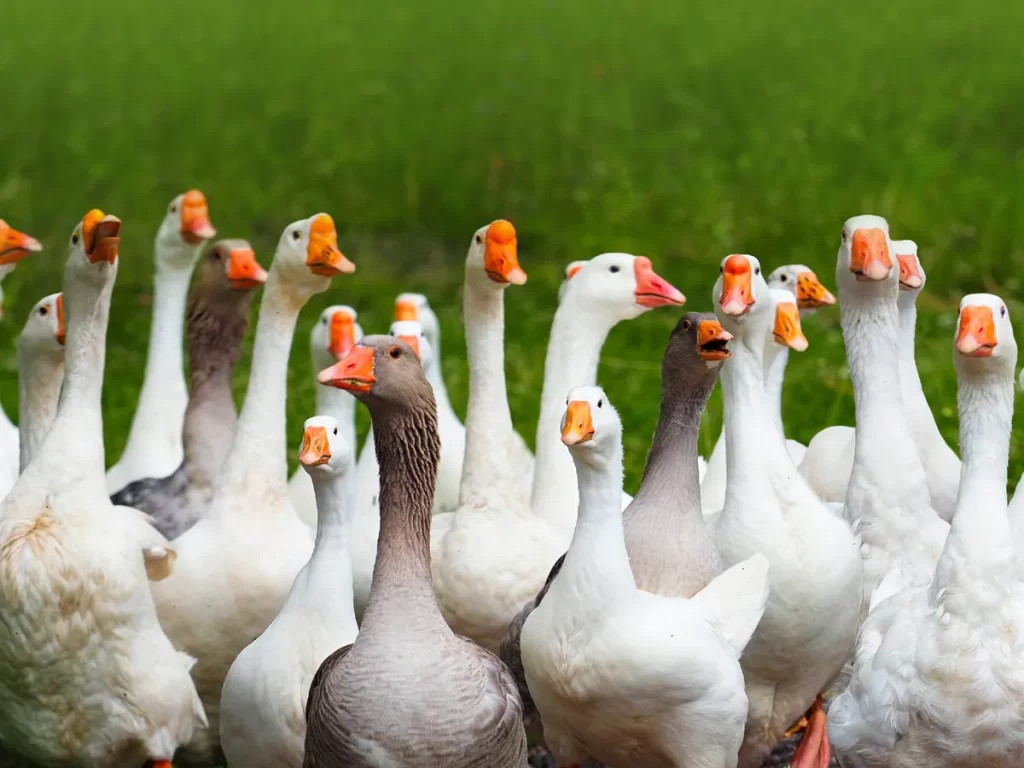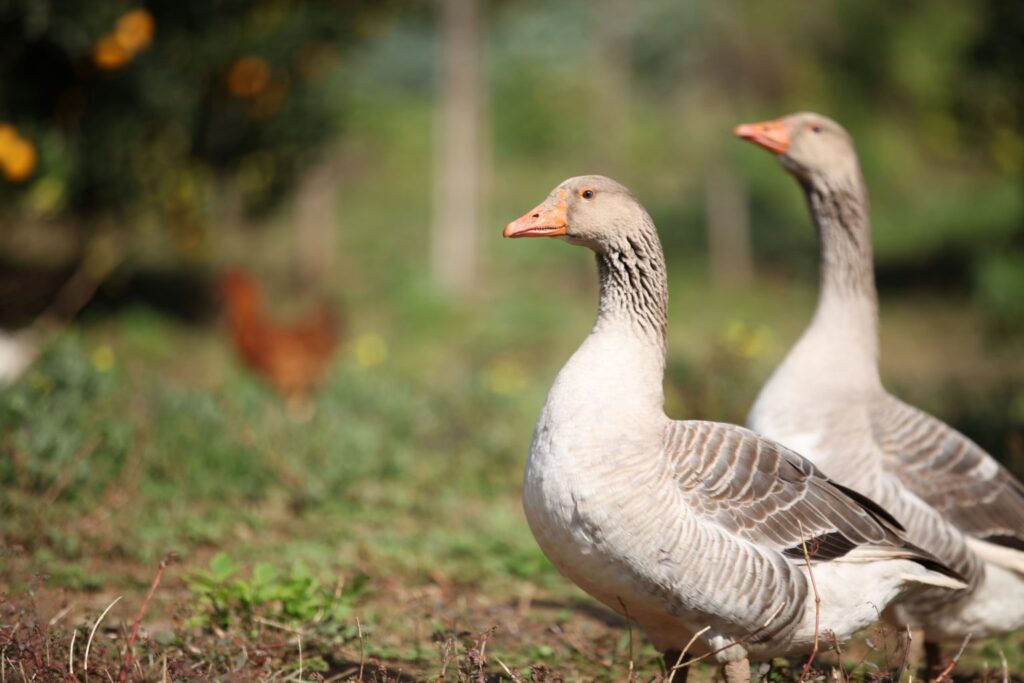Collective Nouns for Geese: What's the Official Terms?

Geese, with their distinct honking calls and majestic formations in the sky, are fascinating creatures. When it comes to describing these birds in groups, English offers a variety of colorful and specific terms depending on the geese’s activity and location. Understanding these collective nouns for geese can provide a deeper appreciation for their behavior and social structure.
Other Names for a Group of Geese
When geese gather, the term used to describe them varies based on their environment and actions. The most common and general term is a "flock of geese." However, if they are on land or water, you might hear different terms being used, such as:
- "Gaggle of geese" when the birds are on the ground or floating in water.
- "Skein" or "wedge of geese" when they are in flight.
- Less commonly, a "plump of geese" can refer to a group of geese on the ground.
These collective nouns capture the dynamic nature of geese’s movements and habits, emphasizing how context shapes language.

What is a Flock of Geese in Flight Called?
When geese take to the skies, their flight formations are often described using distinct terms. The most well-known is a "skein of geese," which refers to geese flying in a loose, often irregular formation. However, when the geese adopt their iconic V-shape, they are known as a "wedge of geese."
Why a Wedge?
The term "wedge" aptly describes the triangular shape of the geese’s flight formation. This V-formation is not just visually striking; it serves a functional purpose. By flying in a wedge, geese reduce air resistance for those behind the lead bird. This allows the group to conserve energy and fly longer distances. The wedge formation is a remarkable example of how geese collaborate to achieve greater efficiency.
Why Do Geese Fly Together in Groups?
Flying together in groups offers geese several advantages, both practical and social. Some key reasons include:
- Energy Conservation: The V-formation reduces drag, making it easier for the flock to cover long distances.
- Safety in Numbers: A group is less vulnerable to predators than a lone bird.
- Communication: Geese honk to encourage one another and maintain formation.
- Navigation: Younger geese learn migratory routes by following older, experienced birds.
This cooperative behavior underscores the intelligence and adaptability of geese as they navigate vast distances.
Group Name in Water
When geese are on water, they are often referred to as a "gaggle of geese." This term paints a vivid picture of the birds floating together, sometimes noisily communicating with one another. Whether they are feeding, resting, or socializing, geese on water exhibit a sense of camaraderie that justifies the use of such a specific collective noun.
Why a Gaggle
The word "gaggle" originates from Middle English and is believed to mimic the sound of geese honking. The term is generally reserved for geese that are not in flight, emphasizing their vocal nature and somewhat chaotic movements when grounded.
How Many Geese Are Required for a Gaggle?
While there is no strict rule, a "gaggle" typically refers to a group of three or more geese. The emphasis is more on their behavior and setting than the exact number. As long as the geese are on land or water and not in a structured formation, they can be considered a gaggle.
What Is a Group of Baby Geese Called?
A group of baby geese is known as a "brood." These goslings are usually seen with their parents, as geese are highly protective and nurturing. The term "brood" emphasizes the close-knit family structure geese maintain during the early stages of their offspring’s life.
When Do Geese Flock Together?
Geese are most commonly seen flocking together during migration seasons—in the spring and fall. During these times, geese gather in large numbers to undertake their long journeys to breeding or wintering grounds. Flocking together provides geese with the benefits of shared energy and safety, crucial for the demanding nature of migration.
Why Do Geese Flock Together in Large Groups?
Geese’s tendency to form large groups is rooted in survival and efficiency. Here are the primary reasons:
- Migration: Large flocks help geese navigate long distances more effectively.
- Feeding: In agricultural fields, geese flock together to forage for food, creating a sense of safety in numbers.
- Protection: Larger groups make it harder for predators to single out an individual goose.
- Social Structure: Geese are social animals and rely on their flock for companionship and learning.
These behaviors highlight the importance of community within goose populations.
FAQs
How Many Geese Are in a Flock?
The size of a flock can vary greatly depending on the species and the time of year. During migration, flocks can number in the hundreds or even thousands. In non-migratory settings, smaller groups of 10 to 30 geese are more common.
What Is a Pair of Geese Called?
A pair of geese, particularly during the breeding season, is often referred to as a "mated pair." Geese are known for their strong pair bonds and often mate for life, making the term "mated pair" especially fitting.
Geese Species Specific Terms
Different species of geese sometimes have unique collective nouns or nicknames. For instance:
- Canada Geese: Often called a "flock" or "gaggle," depending on the context.
- Snow Geese: Large flocks of snow geese are sometimes referred to as "blizzards," highlighting their snowy-white appearance.
- Greylag Geese: These geese are typically described using the standard terms like "gaggle" or "flock."
Understanding these terms adds depth to how we describe and appreciate geese in their various habitats and activities.
From the honking chaos of a gaggle to the precision of a wedge in flight, geese showcase a remarkable range of behaviors that language captures through specific and vivid collective nouns. The next time you observe a group of geese, whether on land, in water, or soaring across the sky, you’ll have the perfect term to describe their unique formation and activity.